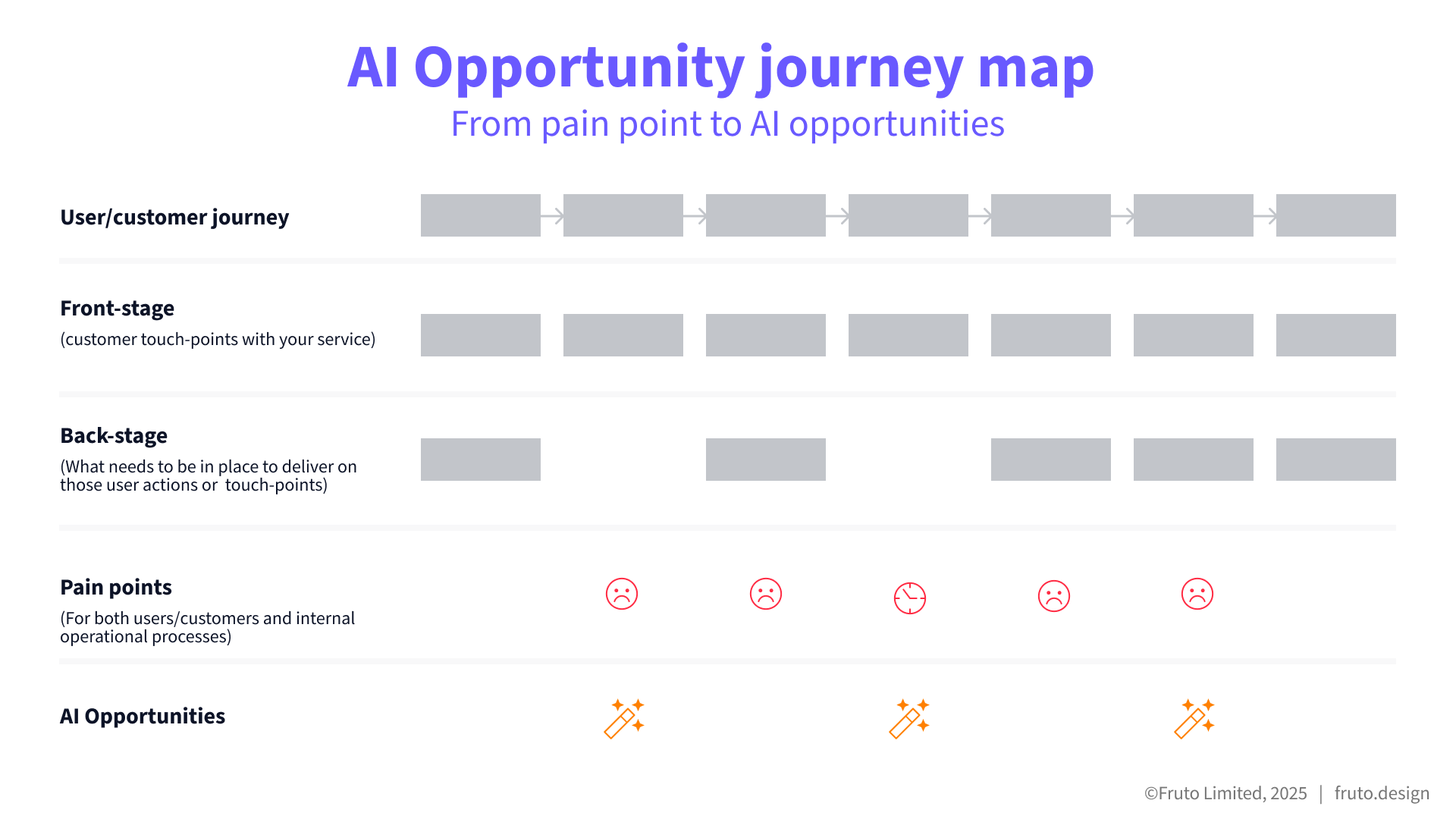Delivering real AI value in your product: a customer-first approach for product leaders
AI has rapidly taken centre stage in product roadmaps and boardroom conversations. Product leaders, from product managers to VPs of Product, are facing intense pressure to launch AI features at a rapid pace. Yet without a clear strategy to deliver both user value and business ROI, there’s a real risk: teams burn through budgets building AI-powered features that fail to make a meaningful impact.
Too often, AI initiatives are driven by the technology itself rather than real customer problems. The result? Features that sound impressive but fall short when it comes to adoption, user trust, or bottom-line business outcomes.
This article is for product professionals who want to move beyond the AI hype and build a product strategy that pays off. We’ll explore a lean, customer-first approach to identifying genuine AI opportunities, prioritising features that truly matter, and validating ideas early with rapid prototyping.
By the end, you’ll have practical guidance to:
Align AI investments with user needs and measurable business outcomes
Ensure cross-functional team alignment
Secure stakeholder buy-in
Deliver AI features that create a real competitive advantage
The roadmap pressure is real, and valid
Across industries, product teams are hearing the same directive: “We need to embed AI.” But often, that mandate arrives without a clear problem definition or success metrics.
The pressure is real and comes from multiple directions:
Market dynamics: Competitors are moving fast, and speed can protect or expand market share.
Executive mandates: AI is seen as essential for innovation and strategy.
Investor and board pressure: Embedding AI signals a future-ready organisation.
But moving fast without clarity risks costly mistakes. The question isn’t how fast we can launch something, it’s whether we’re solving the right problems.

Why AI features fail
Most AI features don’t fail due to poor technology. Instead, they stumble over predictable pitfalls:
Solving the wrong problem
Building complexity over real value
Skipping real-world validation
Losing user trust and adoption
Failing to align with business outcomes
If teams chase AI for its own sake, they risk launching features that don’t resonate with users or fail to move key business metrics like revenue, efficiency, or customer satisfaction.
Start with the problem, not the technology
The most successful AI features don’t start with “Where can we add AI?” but rather:
Where are we losing time, money, or customer trust?
What problems are we solving?
What outcomes are we expecting?
Existing data sources, such as support tickets, analytics, NPS feedback, and behavioural drop-off points, provide valuable signals for identifying pain points that AI can address.
Mapping pain points into AI opportunities
To find the right opportunities:
Map the user journey: Identify moments of friction or unmet needs.
Create an AI Opportunity blueprint: Combine user experience with backstage processes to expose organisational pain points.
Prioritise with impact vs. effort matrices: Focus on high-value, feasible opportunities.
Frame opportunities with hypotheses: Clarify the problem, target audience, AI’s role, and success measures.

AI Opportunity journey map
Prototype the experience, not just the model.
Instead of jumping straight into development:
• Simulate AI outputs manually
• Create static design mockups
• Role-play AI interactions with users
• Measure usability, trust, and perceived value
Lean validation helps reduce risk early, ensuring you’re solving the right problem before significant resources are invested.
Build a scalable UX process to guide AI
Depending on your team’s UX maturity:
No process: start with usability testing and UX reviews.
Ad-hoc or semi-formal: embed structured research into product discovery and link insights to business objectives.
Formalised and strategic: partner with external experts to maintain momentum, bring fresh perspectives, and evolve with changing user expectations.
Get stakeholder buy-in with evidence
Involve stakeholders early through:
Sketching workshops
User insight storytelling
Prototyping walkthroughs
Summarise problem definitions on a one-pager covering:
Problem being solved
Target users
AI’s role and necessity
Success metrics
Track the impact of AI features
Measure adoption, effectiveness, trust, and performance versus non-AI alternatives. This ensures AI initiatives remain accountable, relevant, and continuously improve based on real-world usage.
How to successfully embed AI into your product
Zoom out from the technology
Stay grounded in user needs
Engage with real users early and often
Design before coding
Anchor every initiative to clear business and user outcomes
Ready to dive deeper?
Watch the full webinar “Beyond the roadmap pressure: AI that delivers user value and business ROI” to explore these principles in detail, with real-world examples and practical frameworks.





